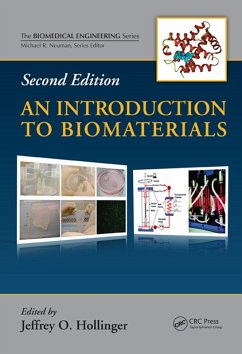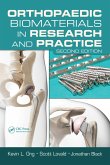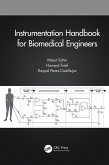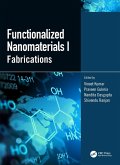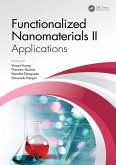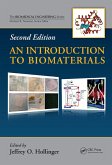An Introduction to Biomaterials (eBook, ePUB)
Redaktion: Hollinger, Jeffrey O.
143,95 €
143,95 €
inkl. MwSt.
Sofort per Download lieferbar

72 °P sammeln
143,95 €
Als Download kaufen

143,95 €
inkl. MwSt.
Sofort per Download lieferbar

72 °P sammeln
Jetzt verschenken
Alle Infos zum eBook verschenken
143,95 €
inkl. MwSt.
Sofort per Download lieferbar
Alle Infos zum eBook verschenken

72 °P sammeln
An Introduction to Biomaterials (eBook, ePUB)
Redaktion: Hollinger, Jeffrey O.
- Format: ePub
- Merkliste
- Auf die Merkliste
- Bewerten Bewerten
- Teilen
- Produkt teilen
- Produkterinnerung
- Produkterinnerung

Bitte loggen Sie sich zunächst in Ihr Kundenkonto ein oder registrieren Sie sich bei
bücher.de, um das eBook-Abo tolino select nutzen zu können.
Hier können Sie sich einloggen
Hier können Sie sich einloggen
Sie sind bereits eingeloggt. Klicken Sie auf 2. tolino select Abo, um fortzufahren.

Bitte loggen Sie sich zunächst in Ihr Kundenkonto ein oder registrieren Sie sich bei bücher.de, um das eBook-Abo tolino select nutzen zu können.
A practical road map to the key families of biomaterials and their potential applications in clinical therapeutics, Introduction to Biomaterials, Second Edition follows the entire path of development from theory to lab to practical application. It highlights new biocompatibility issues, metrics, and statistics as well as new legislation for intelle
- Geräte: eReader
- mit Kopierschutz
- eBook Hilfe
Andere Kunden interessierten sich auch für
![Orthopaedic Biomaterials in Research and Practice (eBook, ePUB) Orthopaedic Biomaterials in Research and Practice (eBook, ePUB)]() Kevin L. OngOrthopaedic Biomaterials in Research and Practice (eBook, ePUB)73,95 €
Kevin L. OngOrthopaedic Biomaterials in Research and Practice (eBook, ePUB)73,95 €![Instrumentation Handbook for Biomedical Engineers (eBook, ePUB) Instrumentation Handbook for Biomedical Engineers (eBook, ePUB)]() Mesut SahinInstrumentation Handbook for Biomedical Engineers (eBook, ePUB)51,95 €
Mesut SahinInstrumentation Handbook for Biomedical Engineers (eBook, ePUB)51,95 €![Carbon Nanotubes (eBook, ePUB) Carbon Nanotubes (eBook, ePUB)]() Carbon Nanotubes (eBook, ePUB)97,95 €
Carbon Nanotubes (eBook, ePUB)97,95 €![Functionalized Nanomaterials I (eBook, ePUB) Functionalized Nanomaterials I (eBook, ePUB)]() Functionalized Nanomaterials I (eBook, ePUB)65,95 €
Functionalized Nanomaterials I (eBook, ePUB)65,95 €![Functionalized Nanomaterials II (eBook, ePUB) Functionalized Nanomaterials II (eBook, ePUB)]() Vineet KumarFunctionalized Nanomaterials II (eBook, ePUB)54,95 €
Vineet KumarFunctionalized Nanomaterials II (eBook, ePUB)54,95 €![Functionalized Polysulfones (eBook, ePUB) Functionalized Polysulfones (eBook, ePUB)]() Functionalized Polysulfones (eBook, ePUB)103,95 €
Functionalized Polysulfones (eBook, ePUB)103,95 €![An Introduction to Biomaterials (eBook, PDF) An Introduction to Biomaterials (eBook, PDF)]() An Introduction to Biomaterials (eBook, PDF)143,95 €
An Introduction to Biomaterials (eBook, PDF)143,95 €-
-
-
A practical road map to the key families of biomaterials and their potential applications in clinical therapeutics, Introduction to Biomaterials, Second Edition follows the entire path of development from theory to lab to practical application. It highlights new biocompatibility issues, metrics, and statistics as well as new legislation for intelle
Dieser Download kann aus rechtlichen Gründen nur mit Rechnungsadresse in A, B, BG, CY, CZ, D, DK, EW, E, FIN, F, GR, HR, H, IRL, I, LT, L, LR, M, NL, PL, P, R, S, SLO, SK ausgeliefert werden.
Produktdetails
- Produktdetails
- Verlag: Taylor & Francis eBooks
- Seitenzahl: 644
- Erscheinungstermin: 28. November 2011
- Englisch
- ISBN-13: 9781040069349
- Artikelnr.: 72519975
- Verlag: Taylor & Francis eBooks
- Seitenzahl: 644
- Erscheinungstermin: 28. November 2011
- Englisch
- ISBN-13: 9781040069349
- Artikelnr.: 72519975
- Herstellerkennzeichnung Die Herstellerinformationen sind derzeit nicht verfügbar.
Dr. Jeffrey O. Hollinger graduated from Hofstra University in 1969 and received a dental degree and PhD from the University of Maryland in 1973 and 1981, respectively. In addition, he completed a dental residency program and craniofacial fellowship in the U.S. Army Dental Corps. Since 2000, Dr. Hollinger has been a tenured professor at Carnegie Mellon University (CMU) in the departments of biomedical engineering and biological sciences. He is the director of the Bone Tissue Engineering Center at CMU. From 1993 to 2000, he was a tenured professor at the Oregon Health Sciences University in the departments of surgery and developmental biology, and he directed the Northwest Wound Healing Center. In 1993 Dr. Hollinger retired from the U.S. Army as a colonel after serving 20 years of active duty. During that period, he was the director of the Army's Bone Program, as well as the director of the Department of Physiology and Biochemistry at the U.S. Army Institute of Dental Research at the Walter Reed Army Medical Center in Washington, DC. He has over 35 years of experience in bone regeneration using biological factors, biomaterials, and preclinical animal models. Dr. Hollinger has received numerous federal grants as the principal investigator (NIH, NSF, DoD, and NIST) focusing on applied and fundamental sciences for bone regeneration and is engaged with several industrial groups emphasizing bone regenerative therapeutics, as well as serving on corporate boards. Dr. Hollinger has several patents and has licensed technology developed in his lab. He received the prestigious Clemson Award in biomaterials in 2008. He has over 250 peer-reviewed publications, abstracts, book chapters, and books.
Consensus Definitions, Fundamental Concepts, and a Standardized Approach to
Applied Biomaterials Sciences. Biology, Biomechanics, Biomaterial
Interactions: Wound Healing Biology. Cutaneous Wound Pathobiology: Raison
d'etre for Tissue Engineering. Osseous Wound Healing. Biology,
Biomechanics, Biomaterial Interactions: Cellular Mechanics. Cell and Tissue
Mechanobiology. Biology, Biomechanics, Biomaterial Interactions:
Materials-Host Interactions. Cell-Material Interactions: Fundamental Design
Issues for Tissue Engineering and Clinical Considerations. Host Response to
Biomaterials. Protein Adsorption at the Biomaterial-Tissue Interface.
Biomaterials Testing, Statistics, Regulatory Considerations, Intellectual
Property: Standardized Materials Testing. In Vitro Testing of Biomaterials.
Assessment of Biomaterials: Standardized In Vivo Testing. Biomaterials
Testing, Statistics, Regulatory Considerations, Intellectual Property:
Statistics. Basic Principles of Statistics: Considerations for Biomaterials
Engineers. Therapy Development, Animal Testing, and Regulatory Issues.
Fundamentals of Patenting for the Biomaterials Scientist. Biomaterials
Compositions. Proteins and Amino Acid-Derived Polymers. Three-Dimensional
Fibrin Constructs in Tissue Engineering. Biomedical Polyurethanes. Polymers
Derived from l-Tyrosine. Poly(propylene Fumarate). Complex Polysaccharides:
Chitosan and Alginate. Collagen: A Natural Biomaterial for Tissue
Engineering. Polyphosphazenes. Biologically Active Glasses. Silk-Based
Biomaterials: Biology, Properties, and Clinical Applications. Calcium-Based
Bioceramics: Biology, Properties, and Clinical Applications. Biomaterials
Applications. Tissue Engineering of Skin. Polymeric Biomaterials for Drug
and Nucleic Acid Delivery. Orthopedic Prostheses and Joint Implants. Bone
and Biomaterials. Functional Regeneration of Synovial Joints In Vivo: The
Role of Biomaterials and Scaffold Design. Tissue Engineering, Biomaterials,
and the Nervous System. Ligaments, Biomaterials, and Tissue-Engineering
Opportunities. Cardiovascular Tissue Engineering and Biomaterials. Index.
Applied Biomaterials Sciences. Biology, Biomechanics, Biomaterial
Interactions: Wound Healing Biology. Cutaneous Wound Pathobiology: Raison
d'etre for Tissue Engineering. Osseous Wound Healing. Biology,
Biomechanics, Biomaterial Interactions: Cellular Mechanics. Cell and Tissue
Mechanobiology. Biology, Biomechanics, Biomaterial Interactions:
Materials-Host Interactions. Cell-Material Interactions: Fundamental Design
Issues for Tissue Engineering and Clinical Considerations. Host Response to
Biomaterials. Protein Adsorption at the Biomaterial-Tissue Interface.
Biomaterials Testing, Statistics, Regulatory Considerations, Intellectual
Property: Standardized Materials Testing. In Vitro Testing of Biomaterials.
Assessment of Biomaterials: Standardized In Vivo Testing. Biomaterials
Testing, Statistics, Regulatory Considerations, Intellectual Property:
Statistics. Basic Principles of Statistics: Considerations for Biomaterials
Engineers. Therapy Development, Animal Testing, and Regulatory Issues.
Fundamentals of Patenting for the Biomaterials Scientist. Biomaterials
Compositions. Proteins and Amino Acid-Derived Polymers. Three-Dimensional
Fibrin Constructs in Tissue Engineering. Biomedical Polyurethanes. Polymers
Derived from l-Tyrosine. Poly(propylene Fumarate). Complex Polysaccharides:
Chitosan and Alginate. Collagen: A Natural Biomaterial for Tissue
Engineering. Polyphosphazenes. Biologically Active Glasses. Silk-Based
Biomaterials: Biology, Properties, and Clinical Applications. Calcium-Based
Bioceramics: Biology, Properties, and Clinical Applications. Biomaterials
Applications. Tissue Engineering of Skin. Polymeric Biomaterials for Drug
and Nucleic Acid Delivery. Orthopedic Prostheses and Joint Implants. Bone
and Biomaterials. Functional Regeneration of Synovial Joints In Vivo: The
Role of Biomaterials and Scaffold Design. Tissue Engineering, Biomaterials,
and the Nervous System. Ligaments, Biomaterials, and Tissue-Engineering
Opportunities. Cardiovascular Tissue Engineering and Biomaterials. Index.
Consensus Definitions, Fundamental Concepts, and a Standardized Approach to
Applied Biomaterials Sciences. Biology, Biomechanics, Biomaterial
Interactions: Wound Healing Biology. Cutaneous Wound Pathobiology: Raison
d'etre for Tissue Engineering. Osseous Wound Healing. Biology,
Biomechanics, Biomaterial Interactions: Cellular Mechanics. Cell and Tissue
Mechanobiology. Biology, Biomechanics, Biomaterial Interactions:
Materials-Host Interactions. Cell-Material Interactions: Fundamental Design
Issues for Tissue Engineering and Clinical Considerations. Host Response to
Biomaterials. Protein Adsorption at the Biomaterial-Tissue Interface.
Biomaterials Testing, Statistics, Regulatory Considerations, Intellectual
Property: Standardized Materials Testing. In Vitro Testing of Biomaterials.
Assessment of Biomaterials: Standardized In Vivo Testing. Biomaterials
Testing, Statistics, Regulatory Considerations, Intellectual Property:
Statistics. Basic Principles of Statistics: Considerations for Biomaterials
Engineers. Therapy Development, Animal Testing, and Regulatory Issues.
Fundamentals of Patenting for the Biomaterials Scientist. Biomaterials
Compositions. Proteins and Amino Acid-Derived Polymers. Three-Dimensional
Fibrin Constructs in Tissue Engineering. Biomedical Polyurethanes. Polymers
Derived from l-Tyrosine. Poly(propylene Fumarate). Complex Polysaccharides:
Chitosan and Alginate. Collagen: A Natural Biomaterial for Tissue
Engineering. Polyphosphazenes. Biologically Active Glasses. Silk-Based
Biomaterials: Biology, Properties, and Clinical Applications. Calcium-Based
Bioceramics: Biology, Properties, and Clinical Applications. Biomaterials
Applications. Tissue Engineering of Skin. Polymeric Biomaterials for Drug
and Nucleic Acid Delivery. Orthopedic Prostheses and Joint Implants. Bone
and Biomaterials. Functional Regeneration of Synovial Joints In Vivo: The
Role of Biomaterials and Scaffold Design. Tissue Engineering, Biomaterials,
and the Nervous System. Ligaments, Biomaterials, and Tissue-Engineering
Opportunities. Cardiovascular Tissue Engineering and Biomaterials. Index.
Applied Biomaterials Sciences. Biology, Biomechanics, Biomaterial
Interactions: Wound Healing Biology. Cutaneous Wound Pathobiology: Raison
d'etre for Tissue Engineering. Osseous Wound Healing. Biology,
Biomechanics, Biomaterial Interactions: Cellular Mechanics. Cell and Tissue
Mechanobiology. Biology, Biomechanics, Biomaterial Interactions:
Materials-Host Interactions. Cell-Material Interactions: Fundamental Design
Issues for Tissue Engineering and Clinical Considerations. Host Response to
Biomaterials. Protein Adsorption at the Biomaterial-Tissue Interface.
Biomaterials Testing, Statistics, Regulatory Considerations, Intellectual
Property: Standardized Materials Testing. In Vitro Testing of Biomaterials.
Assessment of Biomaterials: Standardized In Vivo Testing. Biomaterials
Testing, Statistics, Regulatory Considerations, Intellectual Property:
Statistics. Basic Principles of Statistics: Considerations for Biomaterials
Engineers. Therapy Development, Animal Testing, and Regulatory Issues.
Fundamentals of Patenting for the Biomaterials Scientist. Biomaterials
Compositions. Proteins and Amino Acid-Derived Polymers. Three-Dimensional
Fibrin Constructs in Tissue Engineering. Biomedical Polyurethanes. Polymers
Derived from l-Tyrosine. Poly(propylene Fumarate). Complex Polysaccharides:
Chitosan and Alginate. Collagen: A Natural Biomaterial for Tissue
Engineering. Polyphosphazenes. Biologically Active Glasses. Silk-Based
Biomaterials: Biology, Properties, and Clinical Applications. Calcium-Based
Bioceramics: Biology, Properties, and Clinical Applications. Biomaterials
Applications. Tissue Engineering of Skin. Polymeric Biomaterials for Drug
and Nucleic Acid Delivery. Orthopedic Prostheses and Joint Implants. Bone
and Biomaterials. Functional Regeneration of Synovial Joints In Vivo: The
Role of Biomaterials and Scaffold Design. Tissue Engineering, Biomaterials,
and the Nervous System. Ligaments, Biomaterials, and Tissue-Engineering
Opportunities. Cardiovascular Tissue Engineering and Biomaterials. Index.
